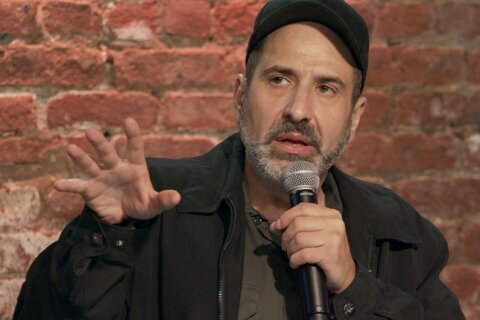We all remember Burl Ives in “Rudolph the Red-Nosed Reindeer” (1964), but a different stop-motion TV special is celebrating half a century of holiday cheer.
This Friday, ABC airs the 50th anniversary of “Santa Claus is Comin’ To Town” (1970), which at 51 minutes remains the most compact origin story of Santa Claus ever made.
The timeless story follows Kriss Kringle, who arrives as a baby on the doorstep of Tanta Kringle, the first toy maker to the king. Once he’s of age, Kris delivers the goods to nearby Sombertown, where toys have been outlawed by the evil Burgermeister Meisterburger. So, Kris must find ways to sneak the toys to the kids overnight.
Created by Arthur Rankin Jr. and Jules Bass for Rankin/Bass Animated Entertainment, the film features the Japanese animation technique known as “Animagic.” All of the characters are miniatures made out of wood and plastic, which are moved inch by inch and photographed one frame at a time for truly impressive stop-motion animation.
The technique may appear herky-jerky to the modern eye with abrupt movements in fits and starts, particularly for children raised on the wondrous digital animation of Pixar. Still, since the genre’s inception in the blockbuster “King Kong” (1933), the characters distinctly have more of a soul, if such intangible things can be measured.
While Rankin & Bass also produced hand-drawn animation like “Frosty the Snowman” (1969) and “Twas the Night Before Christmas” (1974), “Santa Claus is Comin’ to Town” was just their third stop-motion holiday special after “Rudolph” (1964) and “The Little Drummer Boy” (1968), enabling the future hit “The Year Without a Santa Claus” (1974).
If you liked Mickey Rooney’s duel with the Heat and Snow Meiser, you can thank “Santa Claus is Comin’ to Town,” where he lends Kriss Kringle a lovable, altruistic spirit with a deep belly laugh. Robie Lester voices Jessica Claus, Joan Gardner is Tanta Kringle, Paul Frees is the Burgermeister, and Keenan Wynn is the Winter Warlock.
Best of all, Fred Astaire steals the show as the narrating postman Special Delivery “S.D.” Kluger, who fields kids’ questions: “So that’s how he got his beard!” Did you know his “ho ho” laugh was inspired by seals? Or that reindeer fly due to magical feed corn? Even adults can appreciate the use of stockings to subvert the town’s toy ban.
Such an origin story was recently attempted by the animated “Klaus” (2019), while other elements were explored in “The Santa Clause” (1994) and “Fatman” (2020). However, the 1970 version is practically canon at this point, right down to construction of the same North Pole castle that appeared in “Rudolph the Red-Nosed Reindeer.”
While “Rudloph” clearly has a deeper songbook from “Silver and Gold” to “Holly Jolly Christmas,” Astaire sings an iconic “Santa Claus is Colin’ to Town,” which was first recorded by Eddie Cantor in 1934 and covered by everyone from Bing Crosby to The Crystals to the Jackson 5, ultimately immortalized by Bruce Springsteen in 1975.
The soundtrack also features “The First Toy Makers to the King,” the villainous reprise “No More Toy Makers to the King” and the show stopper “One Foot in Front of the Other,” which is bound to become stuck in your head for days and weeks to come.
While most of the soundtrack is timeless, two songs stand out as particularly dated.
“Be Prepared to Pay” features the Westminster Children’s Choir to explain why kids sit on Santa’s lap, but modern viewers will cringe at the lyrics, “If you sit in my lap today, a kiss a toy is the price you’ll pay.” Like “Thank Heaven for Little Girls” in “Gigi” (1958), such songs don’t fly after child abuse scandals by the Boy Scouts and Catholic Church.
The other dated song is Jessica’s big number “My World is Beginning Today,” which is meant as a romantic interlude to shout her love from the rooftops, but it’s filmed so flashy with ’70s-tastic graphics that it can only be appreciated in an inebriated state.
Conversely, the forgotten number “Wedding Song” is surprisingly touching, blending religious themes with secular Santa stories for a message of goodwill toward mankind.
That’s the ultimate take-away from “Santa Claus is Coming’ to Town.” As Astaire says, “What would happen if we all tried to be like Santa and learned to give as only he can give, of ourselves, our talents, our love and our hearts? Maybe if we could all learn Santa’s beautiful lesson, maybe there would finally be peace on earth.”








